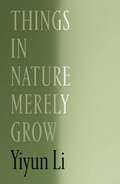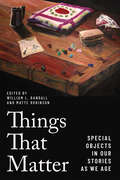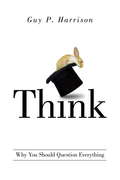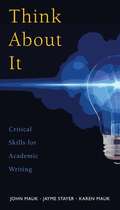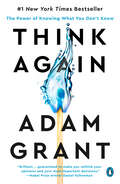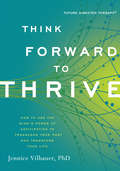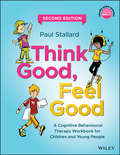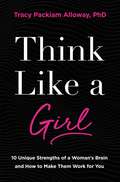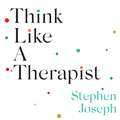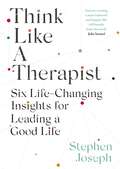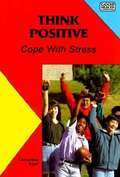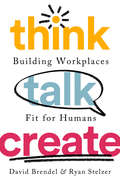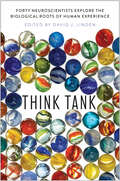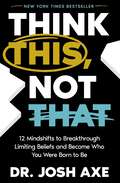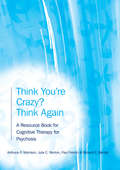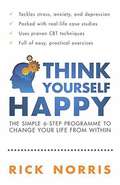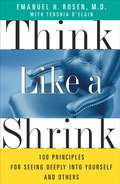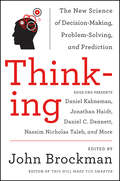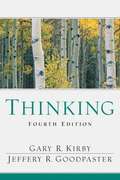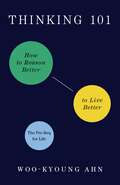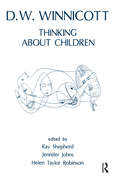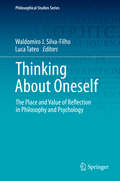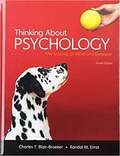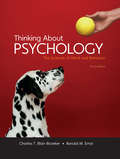- Table View
- List View
Things in Nature Merely Grow
by Yiyun LiYiyun Li’s remarkable, defiant work of radical acceptance as she considers the loss of her son James.“There is no good way to say this,” Yiyun Li writes at the beginning of this book.“There is no good way to state these facts, which must be acknowledged. My husband and I had two children and lost them both: Vincent in 2017, at sixteen, James in 2024, at nineteen. Both chose suicide, and both died not far from home.”There is no good way to say this—because words fall short. It takes only an instant for death to become fact, “a single point in a timeline.” Living now on this single point, Li turns to thinking and reasoning and searching for words that might hold a place for James. Li does what she can: “doing the things that work,” including not just writing but gardening, reading Camus and Wittgenstein, learning the piano, and living thinkingly alongside death.This is a book for James, but it is not a book about grieving or mourning. As Li writes, “The verb that does not die is to be. Vincent was and is and will always be Vincent. James was and is and will always be James. We were and are and will always be their parents. There is no now and then, now and later, only, now and now and now and now.” Things in Nature Merely Grow is a testament to Li’s indomitable spirit.
Things that Matter: Special Objects in Our Stories as We Age
by Matte Robinson William L. RandallMany of us have particular things in our lives – photographs, paintings, old letters, books, furniture, jewellery, or clothing – that hold special meaning for us. Often, they correspond to pivotal memories and can be central to our sense of self and our life narratives, all the more so as we age. Things That Matter sheds important light on the intricate intertwining of mementos with stories – and vice versa – in most people’s lives. The book explores the significance of cherished objects within the life stories of nine participants in a qualitative study of the links between reminiscence and resilience in later life. The researchers who conducted the study represent a variety of fields, including gerontology, social work, ministry, nursing, literature, and education. The book details how life stories can be fraught with a wide range of insights and questions from the memories that get stirred up as people embark on the process of "life review" prompted by the challenges and changes of aging. Shedding light on the complex emotional, psychological, and spiritual findings of the study, Things That Matter ultimately reveals the intricacy of personal narrative and the incredible ways in which things and stories are interwoven in our lives over time.
Think
by Guy P. HarrisonThink more critically, learn to question everything, and don't let your own brain trip you up. This fresh and exciting approach to science, skepticism, and critical thinking will enlighten and inspire readers of all ages. With a mix of wit and wisdom, it challenges everyone to think like a scientist, embrace the skeptical life, and improve their critical thinking skills. Think shows you how to better navigate through the maze of biases and traps that are standard features of every human brain. These innate pitfalls threaten to trick us into seeing, hearing, thinking, remembering, and believing things that are not real or true. Guy Harrison's straightforward text will help you trim away the nonsense, deflect bad ideas, and keep both feet firmly planted in reality. With an upbeat and friendly tone, Harrison shows how it's in everyone's best interest to question everything. He brands skepticism as a constructive and optimistic attitude--a way of life that anyone can embrace. An antidote to nonsense and delusion, this accessible guide to critical thinking is the perfect book for anyone seeking a jolt of inspiration.From the Trade Paperback edition.
Think About It: Critical Skills for Academic Writing
by John Mauk Karen Mauk Jayme StayerTHINK ABOUT IT aims to help users become more critical, active, academic thinkers by teaching nine essential intellectual practices that span the university. Beginning with overarching strategies for critical thinking and ending with interactive outlines that guide users into greater development and organization, THINK ABOUT IT provides key methods for users to think critically and powerfully. Available with InfoTrac Student Collections http://gocengage.com/infotrac.
Think Again: The Power of Knowing What You Don't Know
by Adam GrantThe bestselling author of Give and Take and Originals examines the critical art of rethinking: learning to question your opinions and open other people's minds, which can position you for excellence at work and wisdom in life <P><P>Intelligence is usually seen as the ability to think and learn, but in a rapidly changing world, there's another set of cognitive skills that might matter more: the ability to rethink and unlearn. In our daily lives, too many of us favor the comfort of conviction over the discomfort of doubt. We listen to opinions that make us feel good, instead of ideas that make us think hard. We see disagreement as a threat to our egos, rather than an opportunity to learn. We surround ourselves with people who agree with our conclusions, when we should be gravitating toward those who challenge our thought process. The result is that our beliefs get brittle long before our bones. We think too much like preachers defending our sacred beliefs, prosecutors proving the other side wrong, and politicians campaigning for approval--and too little like scientists searching for truth. Intelligence is no cure, and it can even be a curse: being good at thinking can make us worse at rethinking. The brighter we are, the blinder to our own limitations we can become. <P>Organizational psychologist Adam Grant is an expert on opening other people's minds--and our own. As Wharton's top-rated professor and the bestselling author of Originals and Give and Take, he makes it one of his guiding principles to argue like he's right but listen like he's wrong. With bold ideas and rigorous evidence, he investigates how we can embrace the joy of being wrong, bring nuance to charged conversations, and build schools, workplaces, and communities of lifelong learners. You'll learn how an international debate champion wins arguments, a Black musician persuades white supremacists to abandon hate, a vaccine whisperer convinces concerned parents to immunize their children, and Adam has coaxed Yankees fans to root for the Red Sox. Think Again reveals that we don't have to believe everything we think or internalize everything we feel. It's an invitation to let go of views that are no longer serving us well and prize mental flexibility over foolish consistency. If knowledge is power, knowing what we don't know is wisdom. <P><P><b>A New York Times Bestseller</b>
Think Forward to Thrive: How to Use the Mind's Power of Anticipation to Transcend Your Past and Transform Your Life
by Jennice Vilhauer, PhDStop talking about your past and start creating your future Anticipating a positive future is the key to well-being and mental health. Yet when many people think of the future, they experience anxiety, depression, fear, and self-doubt. Unaware of how to change the future, most people are trapped in a cycle of re-creating their past. But your past does not have to define who you are or where you are going — you can break free. Future Directed Therapy (FDT) is a new psychotherapy that helps people create their future with awareness and choice, with skills based on cutting-edge cognitive science. Think Forward to Thrive is filled with information and step-by-step exercises to help you: * Overcome negative emotions * Identify what you want in life * Transform limiting beliefs * Take action * Live ready for success
Think Good, Feel Good: A Cognitive Behavioural Therapy Workbook for Children and Young People
by Paul StallardNewly updated edition of the highly successful core text for using cognitive behaviour therapy with children and young people The previous edition of Think Good, Feel Good was an exciting, practical resource that pioneered the way mental health professionals approached Cognitive Behaviour Therapy with children and young people. This new edition continues the work started by clinical psychologist Paul Stallard, and provides a range of flexible and highly appealing materials that can be used to structure and facilitate work with young people. In addition to covering the core elements used in CBT programmes, it incorporates ideas from the third wave CBT therapies of mindfulness, compassion focused therapy and acceptance and commitment therapy. It also includes a practical series of exercises and worksheets that introduce specific concepts and techniques. Developed by the author and used extensively in clinical practice, Think Good, Feel Good, Second Edition: A CBT Workbook for Children and Young People starts by introducing readers to the origin, basic theory, and rationale behind CBT and explains how the workbook should be used. Chapters cover elements of CBT including identifying thinking traps; core beliefs; controlling feelings; changing behaviour; and more. Written by an experienced professional with all clinically tested material Fully updated to reflect recent developments in clinical practice Wide range of downloadable materials Includes ideas for third wave CBT, Mindfulness, Compassion Focused Therapy and Acceptance and Commitment Therapy Think Good, Feel Good, Second Edition: A CBT Workbook for Children and Young People is a "must have" resource for clinical psychologists, child and adolescent psychiatrists, community psychiatric nurses, educational psychologists, and occupational therapists. It is also a valuable resource for those who work with young people including social workers, school nurses, practice counsellors, teachers and health visitors.
Think Like a Girl: 10 Unique Strengths of a Woman's Brain and How to Make Them Work for You
by Tracy Packiam Alloway Ph.DThink your way to a more confident, successful you.Women's brains are different. It's not one-size-fits both men and women. Yet many women still believe the myths we tell ourselves.Myth: Women make emotional decisions when stressed.Myth: Women suffer more from unhappiness than men.Myth: Women have to act like men to be effective leaders.Dispel the myths! Stop underestimating your abilities. Stop downplaying your successes. And stop apologizing.In Think Like a Girl, award-winning psychologist, professor, and TEDx speaker Dr. Tracy Packiam Alloway will help you discover how:sticking your hand in a bucket of ice can help you make a less emotional decisionchanging one word can provide a buffer against depressive thoughtsadopting a more relationship-centric leadership approach can be better for mental healthDare to think differently. Dare to think like a girl.
Think Like a Therapist: Six Life-Changing Insights for Leading a Good Life
by Professor Stephen JosephLife throws a lot of unexpected and unpleasant things at us. Many people just struggle on, but others find someone to talk to, someone like Stephen Joseph, who, as a therapist, is trained to listen to their concerns. They turn up with problems - failing relationships, stalled careers, conflicts, feelings of upset - that all seem very real to them in the moment. They may say they just want to 'get back to normal' or 'get back on track'. But sometimes the truth is that things have changed too much to go back. More than that, they come to realise that their life wasn't really on track in the first place. Getting on track now means something much bigger. Over months, or years, Joseph works with his clients to peel away the layers and find something deeper behind their discontents and identify new understandings of what really matters. These revelations often seem to come out of the blue - lightbulb moments in which people suddenly gain a new perspective on how to lead their lives. In this new book, Joseph shares the most important of these realisations: the six ways in which we can begin to see ourselves and the world anew, without distortion, and embark on a road to personal growth and a more emotionally mature life. These are often hard-earned lessons that come at great cost, such as illness or bereavement. But, Joseph says, with an open mind, at the right time, such lessons can be learned by anyone. Drawing on his work over three decades as a psychologist, psychotherapist, university professor and researcher, he distils this vital knowledge for general readers and reveals how the secrets of enduring change are available to us all.
Think Like a Therapist: Six Life-changing Insights for Leading a Good Life
by Professor Stephen JosephLife throws a lot of unexpected and unpleasant things at us. Many people just struggle on, but others find someone to talk to, someone like Stephen Joseph, who, as a therapist, is trained to listen to their concerns. They turn up with problems - failing relationships, stalled careers, conflicts, feelings of upset - that all seem very real to them in the moment. They may say they just want to 'get back to normal' or 'get back on track'. But sometimes the truth is that things have changed too much to go back. More than that, they come to realise that their life wasn't really on track in the first place. Getting on track now means something much bigger. Over months, or years, Joseph works with his clients to peel away the layers and find something deeper behind their discontents and identify new understandings of what really matters. These revelations often seem to come out of the blue - lightbulb moments in which people suddenly gain a new perspective on how to lead their lives. In this new book, Joseph shares the most important of these realisations: the six ways in which we can begin to see ourselves and the world anew, without distortion, and embark on a road to personal growth and a more emotionally mature life. These are often hard-earned lessons that come at great cost, such as illness or bereavement. But, Joseph says, with an open mind, at the right time, such lessons can be learned by anyone. Drawing on his work over three decades as a psychologist, psychotherapist, university professor and researcher, he distils this vital knowledge for general readers and reveals how the secrets of enduring change are available to us all.
Think Positive: Cope With Stress (Good Health Guidelines)
by Catherine ReefDiscusses stress and how to manage it.
Think Talk Create: Building Workplaces Fit For Humans
by David Brendel Ryan StelzerA brilliant counter-narrative for restoring humanity to the bottom-line, numbers-obsessed culture of the modern, 21st century workplace. In a time of unusual stress, with a pandemic raging and economic insecurity and dislocation increasing, we need to rediscover the values that make us human, that give us a sense of meaning in order to increase our potential for productivity and success. What stands in the way, however, is a professional culture where human connectedness is a lost art: the frenzied numbers-obsessed, bottom-line thinking, the "scratch and claw" workplace, and organizations where the boss can literally be an algorithm. Through moving stories and a modern spin on the ancient framework of Socratic dialogue, David Brendel and Ryan Stelzer show how to move forward and build workplaces fit for humans through what uniquely defines us as human beings: our ability to think, talk, and create. By thinking carefully about a challenge, engaging peers in dialogue via open-ended questioning, and building a strategy collaboratively. Think Talk Create enables us to cultivate trust and define collective values, seemingly "soft" attributes that nonetheless markedly increase innovation and, ultimately, financial performance. Think: Step back, slow down, avoid impulsive, short-sighted decision making. Talk: Ask non-judgmental, open ended questions, with your mind as a blank slate, pursuing the problem like an empirical scientist or a judge presiding in court. Create: Bring something new and meaningful into play, a novel solution to a pesky problem that can move the world in surprising, positive directions.
Think Tank: Forty Neuroscientists Explore the Biological Roots of Human Experience
by David J. LindenEssays that explore quirky, counterintuitive aspects of brain function and “make us realize that what goes on in our minds is nothing short of magical” (Scientific American).Neuroscientist David J. Linden approached leading brain researchers and asked each the same question: “What idea about brain function would you most like to explain to the world?” Their responses make up this one-of-a-kind collection of popular science essays that seeks to expand our knowledge of the human mind and its possibilities. The contributors, whose areas of expertise include human behavior, molecular genetics, evolutionary biology, and comparative anatomy, address a host of fascinating topics ranging from personality to perception, to learning, to beauty, to love and sex. The manner in which individual experiences can dramatically change our brains’ makeup is explored.Professor Linden and his contributors open a new window onto the landscape of the human mind and into the cutting-edge world of neuroscience with a fascinating, enlightening compilation that science enthusiasts and professionals alike will find accessible and enjoyable.“Scientists who can effectively communicate science are rare, but here are forty of the best, describing with clarity and enthusiasm the latest in brain research and its impact on our lives.” —Gordon M. Shepherd, co-editor of Handbook of Brain Microcircuits
Think This, Not That: 12 Mindshifts to Breakthrough Limiting Beliefs and Become Who You Were Born to Be
by Dr. Josh AxeInstant New York Times Bestseller Unlock your potential by cultivating self-awareness and curating a fulfilling life full of self-improvement, emotional intelligence, and a growth mindset. Leadership expert and entrepreneur Dr. Josh Axe teaches 12 revolutionary mindshift transformations to beat the grind and reach the life you've always wanted. Redefine success and replace the limiting beliefs of yourself with the healthy mental toughness to think this, not that. Perhaps you're busy but still feel empty. Maybe things haven't turned out how you'd hoped, and life seems stale and unfulfilling. What if you could wake up every morning excited about your purpose, knowing you're fulfilling your greatest potential?A more meaningful life is within your reach, and it starts in one place: your mind.Living with a mindset of false narratives will keep you stuck, locked in a prison of unpursued dreams and goals. But cultivating a new mindset based on what is actually true will set you free—free to start exploring and growing beyond the limits you thought you had.In Think This, Not That, Dr. Josh Axe unpacks the top twelve mental barriers holding people back from realizing their potential and becoming the greatest version of themselves, and contrasts each one with a new empowering mindset, such as:Don't simply drift; clarify your purpose.Don't define success based on what you accomplish; base it on who you become.Don't be the victim; be the hero.Don't be a slave to your vices; overpower them by building virtues.Don't live by popular opinion; follow enduring principles of wisdom.Don't allow unintentionality; visualize a strategy. Whether you want to improve your physical or financial health, raise the quality of your relationships, or take your career to new heights, these mindshifts will help transform your life.It's time to break through your limiting beliefs and find out who you can become, to build a meaningful life through new thoughts and actions, and to make the switch from what's stalled you toward a life of ultimate significance.
Think You're Crazy? Think Again: A Resource Book for Cognitive Therapy for Psychosis
by Paul French Richard Bentall Anthony P. Morrison Julia RentonAre you troubled by hearing voices or seeing visions that others do not? Do you believe that other people are trying to harm you or control you? Do you feel that something odd is going on that you can’t explain or that things are happening around you with a special meaning? Do you worry that other people can read your mind or that thoughts are being put in your head? Think You’re Crazy? Think Again provides an effective step-by-step aid to understanding your problems, making positive changes and promoting recovery. Written by experts in the field, this book will help you to: understand how your problems developed and what keeps them going use questionnaires and monitoring sheets to identify and track changes in the links between your experiences, how you make sense of these and how you feel and behave learn how to change thoughts, feelings and behaviour for the better practice skills between sessions using worksheets Based on clinically proven techniques and filled with examples of how cognitive therapy can help people with distressing psychotic experiences, Think You’re Crazy? Think Again will be a valuable resource for people with psychosis.
Think Yourself Happy: The Simple 6-Step Programme to Change Your Life from Within
by Rick NorrisStress, anxiety, and depression are more common than ever before. When the 21st-century dream is to have it all - high-powered jobs, happy families, exotic holidays, a beautiful body, and the ideal home - many minds simply cannot cope if we fail to match up. Explaining why this cycle is so hard to break and exactly what you can do about it, Dr Rick Norris presents advice that you know you should take: accept yourself for who you are, prioritise what really matters, reject notions of perfection, plan for a happier future; and the 6 easy steps that make it all possible.
Think like a Shrink: 100 Principles for Seeing Deeply into Yourself and Others
by Emanuel H. RosenFor shrinks, contact with anyone always elicits a rapid and almost involuntary subtext that suggests plausible reasons for why that person is behaving thus. Knowing that personalities are formed not chosen, allows us to perceive even the most difficult people in a broader, less judgmental way. Cultivating a knack for seeing deeply into people and into oneself is invaluable. In this book, you will learn how to examine the hidden causes to problems, be it marital, personal or relating to parenting. Exploring any of the principles given here and then relating them to your own life should help you to see more deeply into people. In looking at these examples of distorted personality styles, you will see yourself, your family, your friends, and soon discover a new way of thinking.
Thinking
by John BrockmanUnlock your mindFrom the bestselling authors of Thinking, Fast and Slow; The Black Swan; and Stumbling on Happiness comes a cutting-edge exploration of the mysteries of rational thought, decision-making, intuition, morality, willpower, problem-solving, prediction, forecasting, unconscious behavior, and beyond. Edited by John Brockman, publisher of Edge. org ("The world's smartest website"--The Guardian), Thinking presents original ideas by today's leading psychologists, neuroscientists, and philosophers who are radically expanding our understanding of human thought. Daniel Kahneman on the power (and pitfalls) of human intuition and "unconscious" thinking - Daniel Gilbert on desire, prediction, and why getting what we want doesn't always make us happy - Nassim Nicholas Taleb on the limitations of statistics in guiding decision-making - Vilayanur Ramachandran on the scientific underpinnings of human nature - Simon Baron-Cohen on the startling effects of testosterone on the brain - Daniel C. Dennett on decoding the architecture of the "normal" human mind - Sarah-Jayne Blakemore on mental disorders and the crucial developmental phase of adolescence - Jonathan Haidt, Sam Harris, and Roy Baumeister on the science of morality, ethics, and the emerging synthesis of evolutionary and biological thinking - Gerd Gigerenzer on rationality and what informs our choices
Thinking (4th Edition)
by Gary R. Kirby Jeffery R. GoodpasterThis book about thinking presents readers with a systematic, practical, and friendly approach that encompasses all fields of study and business. It explores a valuable skill that will inspire and enlarge people's ability to think through life. Chapter topics cover what thinking is, personal barriers, sensing, brain and memory, language, feeling, creative thinking, organizing, logical thinking, scientific thinking, persuasive thinking, problem solving, evaluating, decision and action, and the challenge to go on thinking. They draw ideas on thinking from every period of history–from the philosophers, poets, scientists, psychologists, linguists, and neuroscientists. For thinkers of the new millenium.
Thinking 101: How to Reason Better to Live Better
by Woo-kyoung Ahn“An INVALUABLE RESOURCE to anyone who wants to think better.” —Gretchen RubinAward-winning YALE PROFESSOR Woo-kyoung Ahn delivers “A MUST-READ—a smart and compellingly readable guide to cutting-edge research into how people think.” (Paul Bloom)“A FUN exploration.” —Dax ShepardPsychologist Woo-kyoung Ahn devised a course at Yale called “Thinking” to help students examine the biases that cause so many problems in their daily lives. It quickly became one of the university’s most popular courses. Now, for the first time, Ahn presents key insights from her years of teaching and research in a book for everyone.She shows how “thinking problems” stand behind a wide range of challenges, from common, self-inflicted daily aggravations to our most pressing societal issues and inequities. Throughout, Ahn draws on decades of research from other cognitive psychologists, as well as from her own groundbreaking studies. And she presents it all in a compellingly readable style that uses fun examples from pop culture, anecdotes from her own life, and illuminating stories from history and the headlines.Thinking 101 is a book that goes far beyond other books on thinking, showing how we can improve not just our own daily lives through better awareness of our biases but also the lives of everyone around us. It is, quite simply, required reading for everyone who wants to think—and live—better.
Thinking About Children
by Donald W. WinnicottThinking About Children collects thirty-one papers, of which twenty-eight have never previously been published. As might be expected, they range widely in tone and content from concise clinical observations to more general meditations including the landmark paper "Towards an objective study of human nature". Of particular interest are sections on autism and psychosomatics, where the author's thinking can be seen to foreshadow more recent developments, such as Frances Tustin's work on autism. Together with a substantial introduction by the editors, this book indispensable for those acquainted with the author's work, and an ideal introduction for those who have not yet encountered the extraordinary clarity and depth of his thought.
Thinking About Human Memory
by Humphreys, Michael S. and Chalmers, Kerry A. Michael S. Humphreys Kerry A. ChalmersThinking About Human Memory provides a novel analytical approach to understanding memory that considers the goals of the memory task, the cues and information available, the opportunity to learn, and interference from irrelevant information (noise). Each of the five chapters describing this approach introduces historical ideas and demonstrates how current thinking both differs from and is derived from them. These chapters also contain analyses of current problems designed to demonstrate the power of the approach. In a subsequent chapter, the authors discuss how memory is controlled by the environment, by others, and by ourselves, and then apply their insights to the problem solving of children, our hominin ancestors, and scrub jays. Finally, the questions of how to define episodic memory and how to investigate phylogenetic and developmental changes in memory are addressed. This book will appeal to memory researchers, including applied researchers, and advanced students.
Thinking About Oneself: The Place and Value of Reflection in Philosophy and Psychology (Philosophical Studies Series #141)
by Luca Tateo Waldomiro J. Silva-FilhoThis book advances our theoretical understanding of the human experience. By overcoming dualities such as the relationship between reflection and action, it allows a more in-depth analysis of how concepts constitute complementary parts of the complex human thinking to be developed.Presenting texts written by leading philosophers and psychologists, it provides a comprehensive overview of the current state of theoretical elaboration, which is then used to discuss the place and value of reflection in moral and epistemic scenes. These topics are accessible to experts and young scholars in the field alike, and offer scope for further reflections that could improve our understanding beyond the existing models and “-isms”. The novelty of the book is in the dialogue established between several perspectives (e.g. philosophers and psychologists; Europe, America and Asia; etc.). The contributions of philosophers and psychologists establish a fruitful dialogue, so that readers realize that disciplinary divisions are overcome through dialogue and the common object of inquiry: the way human beings reflect and act in their everyday experiences.
Thinking About Psychology
by Charles T. Blair-Broeker Randal M. ErnstWritten by a distinguished team of teachers, this fourth edition of Thinking About Psychology reflects up-to-date DSM-5 content and research, emphasizes psychology as a science, answers goal-oriented guiding questions, and provides a vast amount of assessment opportunities for students to regularly test their understanding. <p><p> Students are sure to be engrossed by the engaging and conversational tone of authors Charlie Blair-Broeker and Randy Ernst, who have a combined 54 years of high school teaching experience and have led Psychology workshops in more than 30 states!
Thinking About Psychology: The Science of Mind and Behavior
by Blair-Broeker ErnstWritten by a distinguished team of teachers, this fourth edition of Thinking About Psychology reflects up-to-date DSM-5 content and research, emphasizes psychology as a science, answers goal-oriented guiding questions, and provides a vast amount of assessment opportunities for students to regularly test their understanding. <P><P>Students are sure to be engrossed by the engaging and conversational tone of authors Charlie Blair-Broeker and Randy Ernst, who have a combined 54 years of high school teaching experience and have led Psychology workshops in more than 30 states!
